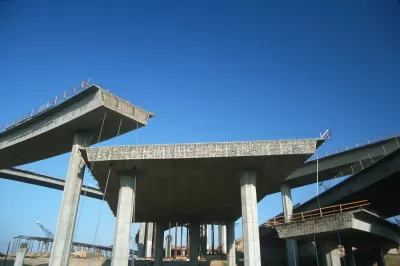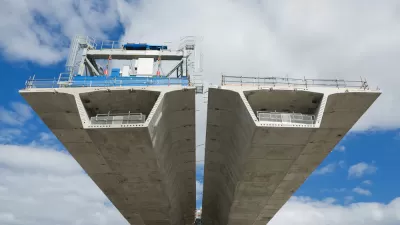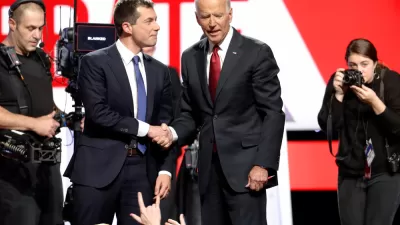The U.S. Department of Transportation this week announced the recipients of $225 million in project funding under the Competitive Highway Bridge Program. The program is reserved for projects located in mostly rural states.

"U.S. Transportation Secretary Elaine L. Chao today announced the recipients of $225 million in Competitive Highway Bridge Program (CHBP) grant funding," according to a U.S. Department of Transportation press release.
The program will deliver funding to 20 projects in 18 states. According to the press release, 25 states were eligible to receive funding from the program. "By law, the funds were restricted to states with population densities of less than 100 people per square-mile based on Census data," reads the release.
The U.S. Department of Transportation supplemented the press release by tweeting remarks delivered by Secretary Chao to the Mississippi Coastal Region Transportation Summit in Biloxi, Mississippi, discussing the program's focus on funding for rural areas.
.@SecElaineChao, “Under this Administration’s guidance, @USDOT is also ensuring that rural areas, which were historically neglected, get proper consideration. I always say that rural America is not looking for a handout – it just wants fairness and equity.”
— TransportationGov (@USDOT) August 29, 2019
The program is also designed to prioritize "bundling of projects, as explained in the release: "The funds must be used for highway bridge replacement or rehabilitation projects on public roads that leverage the efficiencies associated with 'bundling' at least two highway bridge projects into a single contract.
The U.S. DOT is pushing bundling for its savings in time and money, in the hopes of clearing the nation's transportation infrastructure project backlog.
The press release also lists the project with short descriptions of the projects awarded CHBP funding.
FULL STORY: U.S. Transportation Secretary Elaine L. Chao Announces $225 Million in Grants

Maui's Vacation Rental Debate Turns Ugly
Verbal attacks, misinformation campaigns and fistfights plague a high-stakes debate to convert thousands of vacation rentals into long-term housing.

Planetizen Federal Action Tracker
A weekly monitor of how Trump’s orders and actions are impacting planners and planning in America.

San Francisco Suspends Traffic Calming Amidst Record Deaths
Citing “a challenging fiscal landscape,” the city will cease the program on the heels of 42 traffic deaths, including 24 pedestrians.

Defunct Pittsburgh Power Plant to Become Residential Tower
A decommissioned steam heat plant will be redeveloped into almost 100 affordable housing units.

Trump Prompts Restructuring of Transportation Research Board in “Unprecedented Overreach”
The TRB has eliminated more than half of its committees including those focused on climate, equity, and cities.

Amtrak Rolls Out New Orleans to Alabama “Mardi Gras” Train
The new service will operate morning and evening departures between Mobile and New Orleans.
Urban Design for Planners 1: Software Tools
This six-course series explores essential urban design concepts using open source software and equips planners with the tools they need to participate fully in the urban design process.
Planning for Universal Design
Learn the tools for implementing Universal Design in planning regulations.
Heyer Gruel & Associates PA
JM Goldson LLC
Custer County Colorado
City of Camden Redevelopment Agency
City of Astoria
Transportation Research & Education Center (TREC) at Portland State University
Jefferson Parish Government
Camden Redevelopment Agency
City of Claremont





























